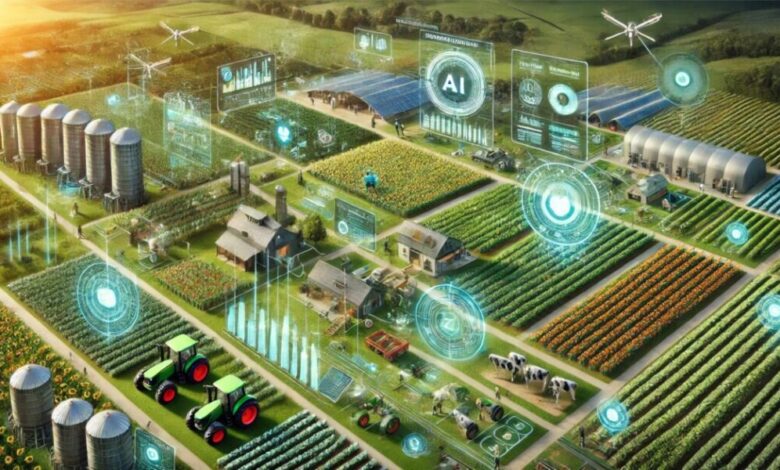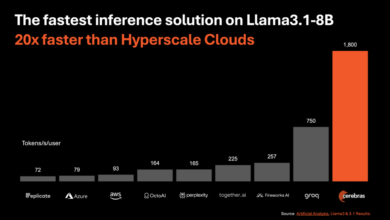Harvesting Intelligence: How Generative AI is Transforming Agriculture

In the era of digital transformation, agriculture is no longer just about soil, water and sunlight. With the advent of generative AI, agriculture is becoming smarter, more efficient and increasingly data-driven. From predicting crop yields with unprecedented accuracy to developing disease-resistant plant varieties, generative AI enables farmers to make precise decisions that optimize yields and resource use. This article explores how generative AI is changing agriculture, looking at its impact on traditional farming practices and its potential for the future.
Understanding generative AI
Generative AI is a form of artificial intelligence designed to produce new content (whether text, images, or predictive models) based on patterns and examples it has learned from existing data. Unlike traditional AI, which focuses on recognizing patterns or making predictions, generative AI creates original results that closely match the data it was trained on. This makes it a powerful tool to improve decision-making and stimulate innovation. A key feature of generative AI is to facilitate building AI applications without a lot of labeled training data. This feature is especially useful in areas such as agriculture, where obtaining labeled training data can be challenging and expensive.
The development of generative AI models involves two main steps: pre-training and refinement. In the pre-training phase, the model is trained on large amounts of data to learn general patterns. This process creates a ‘fundamental’ model with broad and versatile knowledge. In the second phase, the pre-trained model is refined for specific tasks by training it on a smaller, more targeted dataset relevant to the intended application, such as detecting crop diseases. These targeted applications of generative AI are called downstream applications. This approach allows the model to perform specialized tasks effectively, while leveraging the broad insight gained during pre-training.
How generative AI is transforming agriculture
In this section, we explore several downstream applications of generative AI in agriculture.
- Generative AI as an agronomist assistant: One of the ongoing problems in agriculture is the lack of qualified agronomists who can provide expert advice on crop production and protection. To address this challenge, generative AI can serve as an agronomist assistant by offering farmers instant expert advice through chatbots. In this context, a recent Microsoft study evaluated how generative AI models, such as GPT-4, performed on agriculture-related questions from certification exams in Brazil, India and the US. The results were encouraging and showed that GPT-4 is able to deal effectively with domain-specific knowledge. However, adapting these models to local, specialized data remains a challenge. Microsoft Research tested two approaches—refinement, which trains models based on specific data, and Retrieval-Augmented Generation (RAG), which improves responses by retrieving relevant documents and reporting these relative gains.
- Generative AI for tackling data scarcity in agriculture: Another key challenge in applying AI in agriculture is the shortage of labeled training data, which is crucial for building effective models. In agriculture, where labeling data can be labor-intensive and expensive, generative AI is needed offers a promising way forward. Generative AI is distinguished by its ability to work with large amounts of unlabeled historical data and learn general patterns that allow it to make accurate predictions with only a small number of labeled examples. Moreover, it can create synthetic training datafilling gaps where data is scarce. By addressing these data challenges, generative AI improves the performance of AI in agriculture.
- Precision Agriculture: Generative AI is transforming precision agriculture by analyzing data from sources such as satellite images, soil sensors and weather forecasts. It helps predicting crop yieldsautomate harvest fruits, managing livestockAnd optimizing irrigation. These insights enable farmers to make better decisions, improve crop health and yields while using resources more efficiently. This approach not only increases productivity, but also supports sustainable agriculture by reducing waste and environmental impact.
- Generative AI for disease detection: Timely detection of pests, diseases and nutrient deficiencies is crucial for protecting crops and reducing losses. Generative AI uses advanced image recognition and pattern analysis to identify early signs of these problems. By detecting problems At an early stage, farmers can take targeted actions, reduce the need for broad-spectrum pesticides and minimize the impact on the environment. This integration of AI into agriculture improves both sustainability and productivity.
How to maximize the impact of generative AI in agriculture
While current applications show that generative AI has potential in agriculture, making the most of this technology requires the development of specialized generative AI models for the field. These models can better understand the nuances of farming, leading to more accurate and actionable results compared to general purpose models. They also adapt more effectively to different agricultural practices and conditions. However, creating these models involves collecting large amounts of diverse agricultural data, such as crop and pest images, weather data, and insect sounds, and experimenting with different pretraining methods. Although progress is still being created, there is still a lot of work needed to build effective generative AI models for agriculture. Some of the possible use cases of generative AI for agriculture are mentioned below.
Potential use cases
A specialized generative AI model for agriculture could open up several new opportunities in the field. Some key use cases include:
- Smart crop management: In agriculture, smart crop management is a growing field that integrates AI, IoT and big data to improve tasks such as plant growth monitoring, disease detection, yield monitoring and harvesting. Developing precision algorithms for crop management is challenging due to diverse crop types, environmental variables and limited data sets, often requiring the integration of varied data sources such as satellite images, soil sensors and market trends. Generative AI models trained on extensive multi-domain datasets offer a promising solution as they can be refined with minimal examples for different applications. Furthermore, multimodal generative AI integrates visual, textual, and sometimes auditory data, providing a comprehensive analytical approach that is invaluable for understanding complex agricultural situations, especially in precision crop management.
- Automated creation of crop varieties: Specialized generative AI can transform breeding of crops by creating new plant varieties by exploring genetic combinations. By analyzing data on traits such as drought resistance and growth rates, the AI generates innovative genetic blueprints and predicts its performance in different environments. This helps quickly identify promising genetic combinations, guide breeding programs and accelerate the development of optimized crops. This approach helps farmers to adapt more effectively to changing circumstances and market demands.
- Smart livestock farming: Smart livestock farming uses IoT, AI and advanced control technologies to automate essential tasks such as food and water supply, egg collection, activity monitoring and environmental management. This approach aims to increase efficiency and reduce costs in terms of labor, maintenance and materials. The field faces challenges due to the need for expertise in multiple areas and labor-intensive jobs. Generative AI could do that address address these challenges by integrating extensive multimodal data and cross-domain knowledge, streamlining decision-making and automating livestock management.
- Agricultural robots: Farming robots are transforming modern agriculture by automating tasks such as planting, weeding, harvesting and monitoring crop health. AI-powered robots can accurately remove weeds and drones can detect diseases and pests early with advanced sensors, reducing yield losses. Developing these robots requires expertise in robotics, AI, plant sciences, environmental sciences and data analytics, which involves processing complex data from various sources. Generative AI offers a promising solution for automating various tasks of agricultural robots by providing advanced vision, predictive and control capabilities.
The bottom line
Generative AI is reshaping agriculture with smarter, data-driven solutions that improve efficiency and sustainability. By improving crop yield predictions, disease detection and crop breeding, this technology is transforming traditional agricultural practices. While current applications are promising, the real potential lies in developing specialized AI models tailored to the unique needs of agriculture. As we refine these models and integrate diverse data, we can unlock new opportunities to help farmers optimize their practices and better meet the challenges of modern agriculture.






